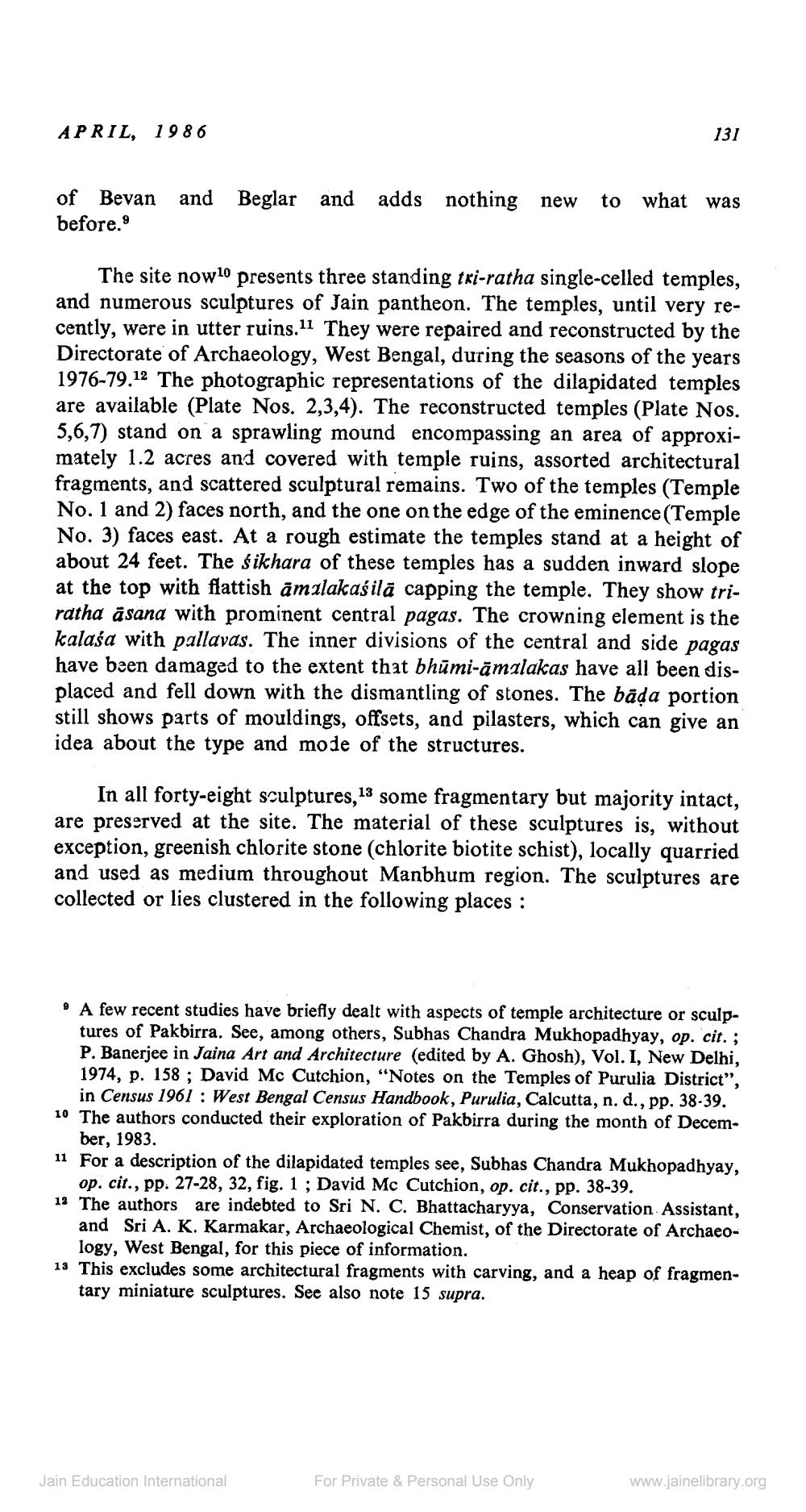________________
APRIL, 1986
131
of Bevan and Beglar and adds nothing new before.
to what was
The site now1o presents three standing tri-ratha single-celled temples, and numerous sculptures of Jain pantheon. The temples, until very recently, were in utter ruins. 11 They were repaired and reconstructed by the Directorate of Archaeology, West Bengal, during the seasons of the years 1976-79.12 The photographic representations of the dilapidated temples are available (Plate Nos. 2,3,4). The reconstructed temples (Plate Nos. 5,6,7) stand on a sprawling mound encompassing an area of approximately 1.2 acres and covered with temple ruins, assorted architectural fragments, and scattered sculptural remains. Two of the temples (Temple No. 1 and 2) faces north, and the one on the edge of the eminence(Temple No. 3) faces east. At a rough estimate the temples stand at a height of about 24 feet. The śikhara of these temples has a sudden inward slope at the top with flattish amalakaśilā capping the temple. They show triratha asana with prominent central pagas. The crowning element is the kalaśa with pallavas. The inner divisions of the central and side pagas have been damaged to the extent that bhūmi-āmalakas have all been displaced and fell down with the dismantling of stones. The bāda portion still shows parts of mouldings, offsets, and pilasters, which can give an idea about the type and mode of the structures.
In all forty-eight sculptures,13 some fragmentary but majority intact, are preserved at the site. The material of these sculptures is, without exception, greenish chlorite stone (chlorite biotite schist), locally quarried and used as medium throughout Manbhum region. The sculptures are collected or lies clustered in the following places :
• A few recent studies have briefly dealt with aspects of temple architecture or sculp
tures of Pakbirra. See, among others, Subhas Chandra Mukhopadhyay, op. cit.; P. Banerjee in Jaina Art and Architecture (edited by A. Ghosh), Vol. I, New Delhi, 1974, p. 158; David Mc Cutchion, “Notes on the Temples of Purulia District",
in Census 1961 : West Bengal Census Handbook, Purulia, Calcutta, n. d., pp. 38-39. 10 The authors conducted their exploration of Pakbirra during the month of Decem
ber, 1983. 11 For a description of the dilapidated temples see, Subhas Chandra Mukhopadhyay,
op. cit., pp. 27-28, 32, fig. 1; David Mc Cutchion, op. cit., pp. 38-39. 12 The authors are indebted to Sri N. C. Bhattacharyya, Conservation Assistant,
and Sri A. K. Karmakar, Archaeological Chemist, of the Directorate of Archaeo
logy, West Bengal, for this piece of information. 13 This excludes some architectural fragments with carving, and a heap of fragmen
tary miniature sculptures. See also note 15 supra.
Jain Education International
For Private & Personal Use Only
www.jainelibrary.org




